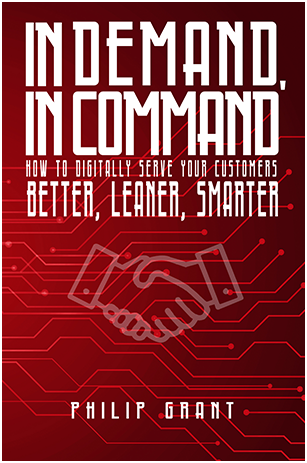
In Demand In Command
1. Creating a Winning Customer Strategy

With macro factors such as customers, investors, market sectors, regulation/de-regulation, globalisation, and technologies dynamically evolving, how truly unique, relevant and sustainable is your business? Furthermore, what will be the impact on your competitive advantage if you cannot optimise your digital capabilities and truly differentiate yourselves from the crowd?
And now more than ever, organisations need to think even harder about new ways of digitally working in an always connected, ‘virtual’ world. One that enables you to digitally serve your customers better, leaner, and smarter. So, what then, does ‘Better, Leaner, Smarter’ look like?
An inductive summary may include:
ü Better
Improved and differentiated value propositions. Intelligent understanding, and subsequent delivery, of customers individual wants and needs. Rapid time to market and deployment of new services. Quicker and more accurate triage, diagnostics, provisioning and activations; resolving faults and billing enquiries; responding to competitive threats. Timely resolution of outstanding cases, disputes, incidents and problems. Delighting the customer, not merely satisfying them
ü Leaner
Lower costs of service, not just lower prices. Price differentiation does not last long in a very competitive market as incumbents respond or imitate accordingly. Long term competitive advantage emanates from the flexible ways of working and reduced cost of your organisational structures (e.g. centralised, hub and spoke, virtualised home working), operational delivery models (e.g. partner outsourcing, managed services etc.), ICT software, network, data, enterprise systems capital and operating expenditure (cloud vs. in house), fewer people, less manual effort, process harmonisation, reduced delivery failures, and lower cost of introducing and supporting product offerings – basically making yourself ‘easy to do business with.’
ü Smarter
More intelligent understanding and knowledge of customers’ individualised profiles. ‘Done in one’ service – right first time, reducing handoffs and double handling. Single view of the customer – reducing unnecessary or inaccurate data, and being able to interpret and action the right data. Reliability of service; responsiveness to customer requests; meeting market expectations; keeping customers informed as orders are being processed; fewer problems and service fulfilment failures
Post Views : 274